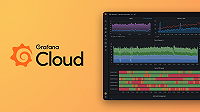Caution
Grafana Alloy is the new name for our distribution of the OTel collector. Grafana Agent has been deprecated and is in Long-Term Support (LTS) through October 31, 2025. Grafana Agent will reach an End-of-Life (EOL) on November 1, 2025. Read more about why we recommend migrating to Grafana Alloy.
discovery.ec2
discovery.ec2 lets you retrieve scrape targets from EC2 instances. The private IP address is used by default, but you can change it to the public IP address using relabeling.
The IAM credentials used must have the ec2:DescribeInstances permission to discover scrape targets, and may optionally have the ec2:DescribeAvailabilityZones permission to make the availability zone ID available as a label.
Usage
discovery.ec2 "LABEL" {
}Arguments
The following arguments are supported:
At most, one of the following can be provided:
bearer_tokenargument.bearer_token_fileargument.- [
basic_authblock][basic_auth]. authorizationblock.oauth2block.
no_proxy can contain IPs, CIDR notations, and domain names. IP and domain
names can contain port numbers. proxy_url must be configured if no_proxy
is configured.
proxy_from_environment uses the environment variables HTTP_PROXY, HTTPS_PROXY
and NO_PROXY (or the lowercase versions thereof). Requests use the proxy from
the environment variable matching their scheme, unless excluded by NO_PROXY.
proxy_url and no_proxy must not be configured if proxy_from_environment
is configured.
proxy_connect_header should only be configured if proxy_url or proxy_from_environment are configured.
Blocks
The following blocks are supported inside the definition of
discovery.ec2:
authorization block
credential and credentials_file are mutually exclusive, and only one can be provided inside an authorization block.
filter block
Filters can be used optionally to filter the instance list by other criteria. Available filter criteria can be found in the Amazon EC2 documentation.
Refer to the Filter API AWS EC2 documentation for the list of supported filters and their descriptions.
oauth2 block
client_secret and client_secret_file are mutually exclusive, and only one can be provided inside an oauth2 block.
The oauth2 block may also contain a separate tls_config sub-block.
no_proxy can contain IPs, CIDR notations, and domain names. IP and domain
names can contain port numbers. proxy_url must be configured if no_proxy
is configured.
proxy_from_environment uses the environment variables HTTP_PROXY, HTTPS_PROXY
and NO_PROXY (or the lowercase versions thereof). Requests use the proxy from
the environment variable matching their scheme, unless excluded by NO_PROXY.
proxy_url and no_proxy must not be configured if proxy_from_environment
is configured.
proxy_connect_header should only be configured if proxy_url or proxy_from_environment are configured.
tls_config block
The following pairs of arguments are mutually exclusive and can’t both be set simultaneously:
ca_pemandca_filecert_pemandcert_filekey_pemandkey_file
When configuring client authentication, both the client certificate (using
cert_pem or cert_file) and the client key (using key_pem or key_file)
must be provided.
When min_version is not provided, the minimum acceptable TLS version is
inherited from Go’s default minimum version, TLS 1.2. If min_version is
provided, it must be set to one of the following strings:
"TLS10"(TLS 1.0)"TLS11"(TLS 1.1)"TLS12"(TLS 1.2)"TLS13"(TLS 1.3)
Exported fields
The following fields are exported and can be referenced by other components:
Each target includes the following labels:
__meta_ec2_ami: The EC2 Amazon Machine Image.__meta_ec2_architecture: The architecture of the instance.__meta_ec2_availability_zone: The availability zone in which the instance is running.__meta_ec2_availability_zone_id: The availability zone ID in which the instance is running (requiresec2:DescribeAvailabilityZones).__meta_ec2_instance_id: The EC2 instance ID.__meta_ec2_instance_lifecycle: The lifecycle of the EC2 instance, set only for ‘spot’ or ‘scheduled’ instances, absent otherwise.__meta_ec2_instance_state: The state of the EC2 instance.__meta_ec2_instance_type: The type of the EC2 instance.__meta_ec2_ipv6_addresses: Comma-separated list of IPv6 addresses assigned to the instance’s network interfaces, if present.__meta_ec2_owner_id: The ID of the AWS account that owns the EC2 instance.__meta_ec2_platform: The Operating System platform, set to ‘windows’ on Windows servers, absent otherwise.__meta_ec2_primary_subnet_id: The subnet ID of the primary network interface, if available.__meta_ec2_private_dns_name: The private DNS name of the instance, if available.__meta_ec2_private_ip: The private IP address of the instance, if present.__meta_ec2_public_dns_name: The public DNS name of the instance, if available.__meta_ec2_public_ip: The public IP address of the instance, if available.__meta_ec2_region: The region of the instance.__meta_ec2_subnet_id: Comma-separated list of subnets IDs in which the instance is running, if available.__meta_ec2_tag_<tagkey>: Each tag value of the instance.__meta_ec2_vpc_id: The ID of the VPC in which the instance is running, if available.
Component health
discovery.ec2 is only reported as unhealthy when given an invalid
configuration. In those cases, exported fields retain their last healthy
values.
Debug information
discovery.ec2 does not expose any component-specific debug information.
Debug metrics
discovery.ec2 does not expose any component-specific debug metrics.
Example
discovery.ec2 "ec2" {
region = "us-east-1"
}
prometheus.scrape "demo" {
targets = discovery.ec2.ec2.targets
forward_to = [prometheus.remote_write.demo.receiver]
}
prometheus.remote_write "demo" {
endpoint {
url = PROMETHEUS_REMOTE_WRITE_URL
basic_auth {
username = USERNAME
password = PASSWORD
}
}
}Replace the following:
PROMETHEUS_REMOTE_WRITE_URL: The URL of the Prometheus remote_write-compatible server to send metrics to.USERNAME: The username to use for authentication to the remote_write API.PASSWORD: The password to use for authentication to the remote_write API.
Compatible components
discovery.ec2 has exports that can be consumed by the following components:
- Components that consume Targets
Note
Connecting some components may not be sensible or components may require further configuration to make the connection work correctly. Refer to the linked documentation for more details.




